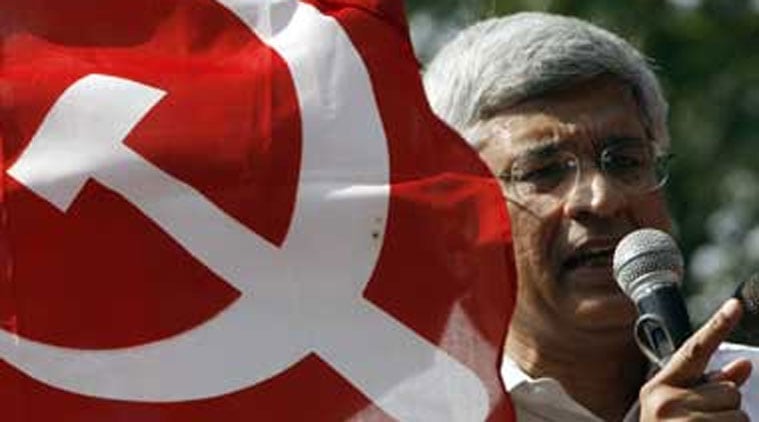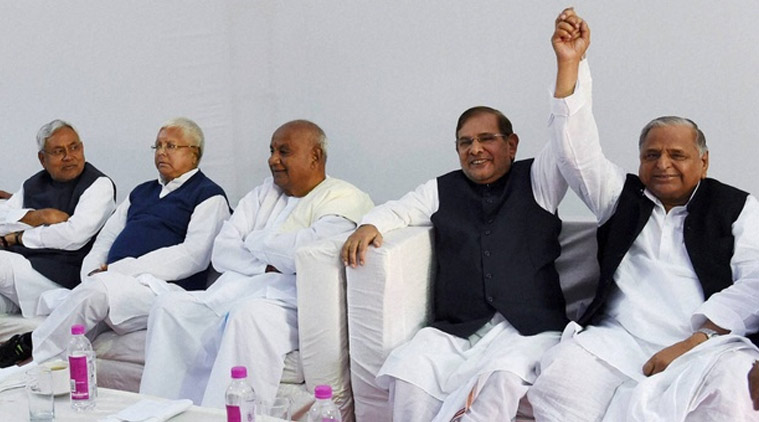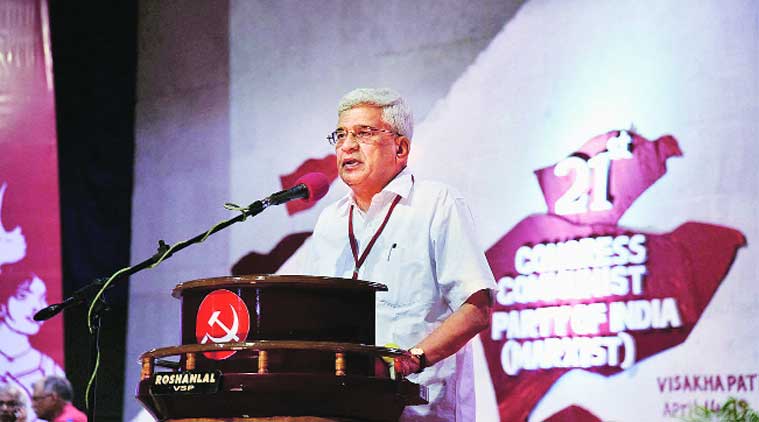This week could seal the fate of India’s ‘mythical’ third front
Written by Vishnu Varma | New Delhi | Updated: April 15, 2015 3:26 pm
The 2014 parliamentary election results were historic in many ways. For the first time, a single party managed to get a majority in the Lok Sabha after 30 years. India finally had a prime minister who was born after independence. But more than anything, themost telling part is that the results were an instinctive barometer on how India’s political landscape has shifted. Apart from the fortunes of the Congress and the BJP, the results pointed to how badly India’s ‘mythical’ third front parties fared. In the face of a resurgent BJP led by a leader who effectively milked the grievances of the Indianpublic, parties such as the Left, Samajwadi Party, RJD, JD(U) were reduced to nothing in their respective state strongholds. Where is it that they went wrong?
That brings us to the developments this week. Almost a year after the landmark elections, two significant and politically important events are in order. On one hand, we have the CPI(M) holding its 21st congress where it is in search of a leader that will bring it back to its ‘acche din’ (good days). On the other, we have six Janata Parivar parties coming together on a single platform announcing to take on the mighty BJP. For both the political coalitions (if I could call them that), this is a week of reckoning. At atime when the Congress has hit rock-bottom, the country is in need of an effective opposition to rise from the ashes and challenge the ruling government on key issues such as land acquisition. It is true that none of these ‘third-front’ parties have any numerical strength in the Lok Sabha, but they can certainly be a compelling gatekeeper in the upper house and take on the government when needed. But these things are easier said than done.
For the Left, the inability to draw large crowds to its rallies, absence of a dynamic socialmedia campaign, lack of charismatic leaders is telling. If political pundits are to be believed, it has effectively handed over the opposition space in West Bengal to the BJP — a state in which it ran an uninterrupted regime for 34 years. A draft political organisational report, not yet made public, reveals that the party has accepted that it is not being able to attract youth, that its mass base is rapidly shrinking and that its leadership in several states are showing reluctance in raising issues of socially oppressed sections. Attempts to stay relevant are churning within the party. Are Sitaram Yechury or S Ramachandran Pillai the answers to the party’s troubling leadership crisis? At this juncture, the party needs to think right, elect a leader who can show the way and find ways to return to its core voter base.
For the Janata Parivar — a supposed merger of parties including the Samajwadi Party, Janata Dal (U), Rashtriya Janata Dal (RJD), Indian National Lok Dal (INLD) and Janata Dal (S) — the prospects might be better but the stakes are higher. More than the love to come together on a single platform, their aims are bound by a single thread: decimate the BJP. While Bihar will go to polls this year, UP will face election heat in 2017 — two states that BJP chief Amit Shah has an eye on. So it is pertinent for the Janata Parivar toget their basics right, rise above any possible internal rebellion and launch a full-frontal attack. The battle would be interesting in Bihar infamous for its caste politics and the future course of leadership if the Janata Parivar would indeed emerge to win. The paramount question lingers: who will be the CM? Nitish, who swiftly ran into the arms of his one-time arch-rival Lalu Yadav after the acrimonious split with BJP, has the distinct upper-edge but Lalu can never be undermined. When they announce the merger (likely in the days to come), things might look hunky-dory but a closer look at seat allocation and campaign strategies could cut open the fissures.
Whatever happens, India’s political landscape is sure to witness an exciting and interesting period. How and whether the ‘mythical’ third front will re-energize, timewill tell.
http://indianexpress.com/article/opinion/web-edits/this-week-could-seal-the-fate-of-indias-mythical-third-front/
CPM looks within: ‘ageing, not growing’
Written by Ruhi Tewari | Visakhapatnam | Updated: April 15, 2015 5:04 am
In a scathing self-criticism of its failures in the last few years, the CPM has admitted its inability to expand, its dropping and ageing membership, slowness in its social mediacampaign and shortcomings in organising national or local campaigns.
This is part of a draft political organisational report, yet to be made public and accessed by The Indian Express. The draft, which will be discussed in the ongoing six-day party congress, says the “inescapable conclusion is that there is a decline in the mass-base of the party”. “The party has been unable to advance as this is reflected in the poor election results. It reflects the failure to expand its political influence, increase its organisational strength and develop its mass base, especially among the basic classes.”
The party admits its failure to rally large numbers for its campaigns. “The party has been able to rally only a small section of party members and mass. Enough effort was not made to reach wider sections and rally them in programmes. Propaganda workorganised among the people was very weak,” the draft says. For agitations and struggles on local issues, the draft report says there was a “failure to identify the immediate or local issues on which masses will respond in a big manner”.
It also criticises the leadership in states for their reluctance to take up social issues. “There is reluctance on the part of the leadership in many states to take up social issues of the socially oppressed sections of the people. The negative attitude of the leadership in some states is creating hindrance in taking up social issues and rallying socially oppressed sections,” the report says, calling for a review of the attitude of leaders.
About dropping membership, it says, “The highpercentage of droppage shows organisation weaknesses such as loose recruitment, inactivity of the party members and branches, low political-ideological level, weaknesses in educating party member etc.”
The party has also identified an “ageing of party membership”, which it says shows “young people are not coming forward to join the party”. According to the report, only 6.5 per cent of party members areunder the age of 25, and only 13.6 percent are in the age group 26-31, as against nearly 50 per cent in the age group 32-50 and 27 per cent between 50 and 70. “The has adverse impact on activities of the party,” the report says.
It notes there is no “substantial improvement in women composition” and that womencomposition in higher committees is “poor”.
About its approach to social media, the party has admitted it was “late in recognising the importance of these new forms of communication” and that “there is yet to be any effort to intervene in debates that are going on in social media platforms”.
The draft report, which calls for “streamlining” the work of the party centre, politburo and central committee and strengthening the party centre, says the “political ideological level of party members is low”. It admits that “in the case of large section of party members, there is not much qualitative difference between the members of the party and the sympathisers and supporters.” It cites “an extreme mismatch between the social composition of the total party members and the composition of the higher committees in some states”.
The report notes that though the 20th party congress and a midterm review report called for a rectification campaign, “there is no substantial change in the overall situation”.
The draft report, prepared on the basis of work reports of state committees, is not exhaustive since the party plans to hold a special plenum to discuss organisational issues later this year.
http://indianexpress.com/article/india/politics/cpm-looks-within-ageing-not-growing/




